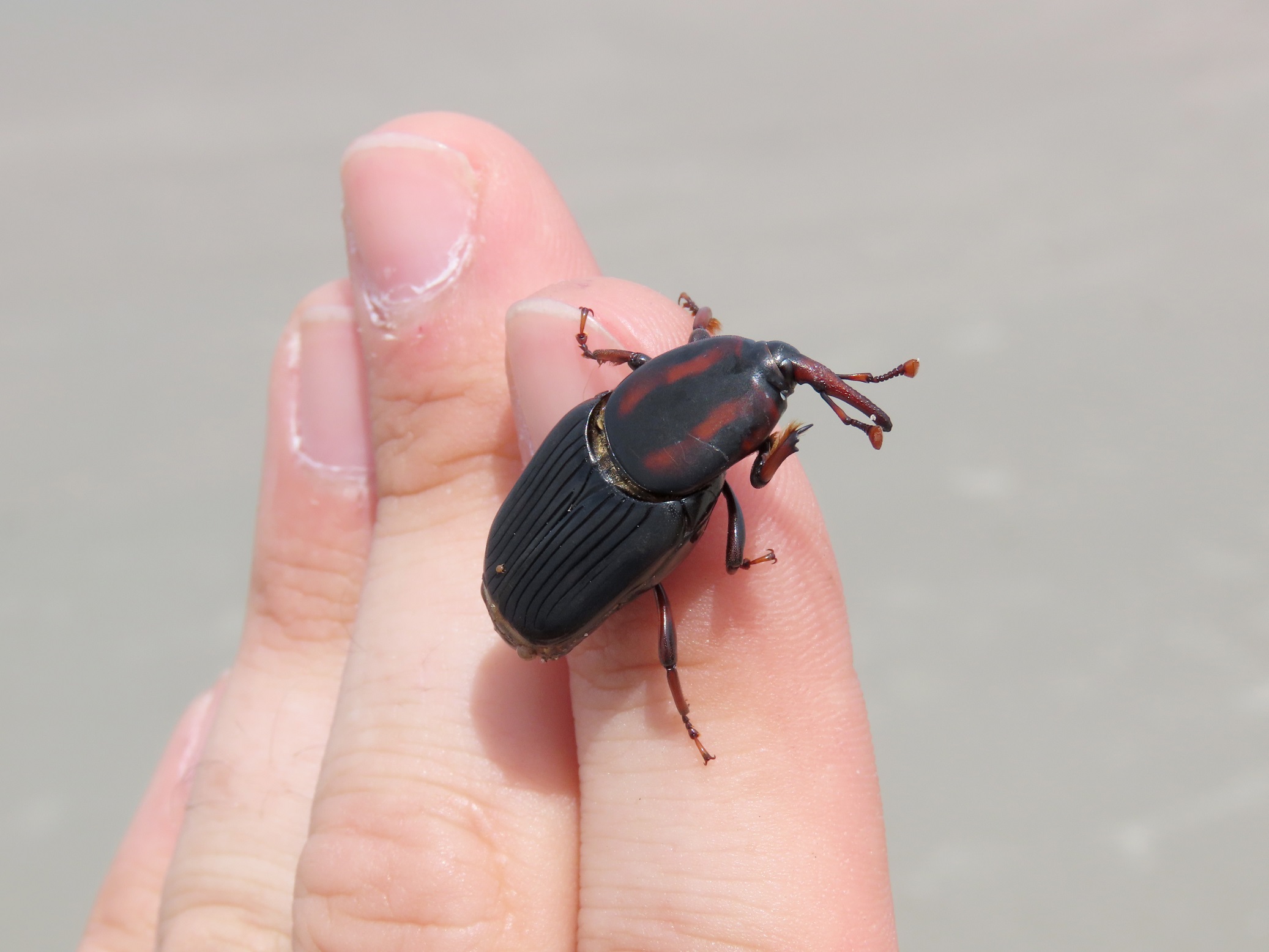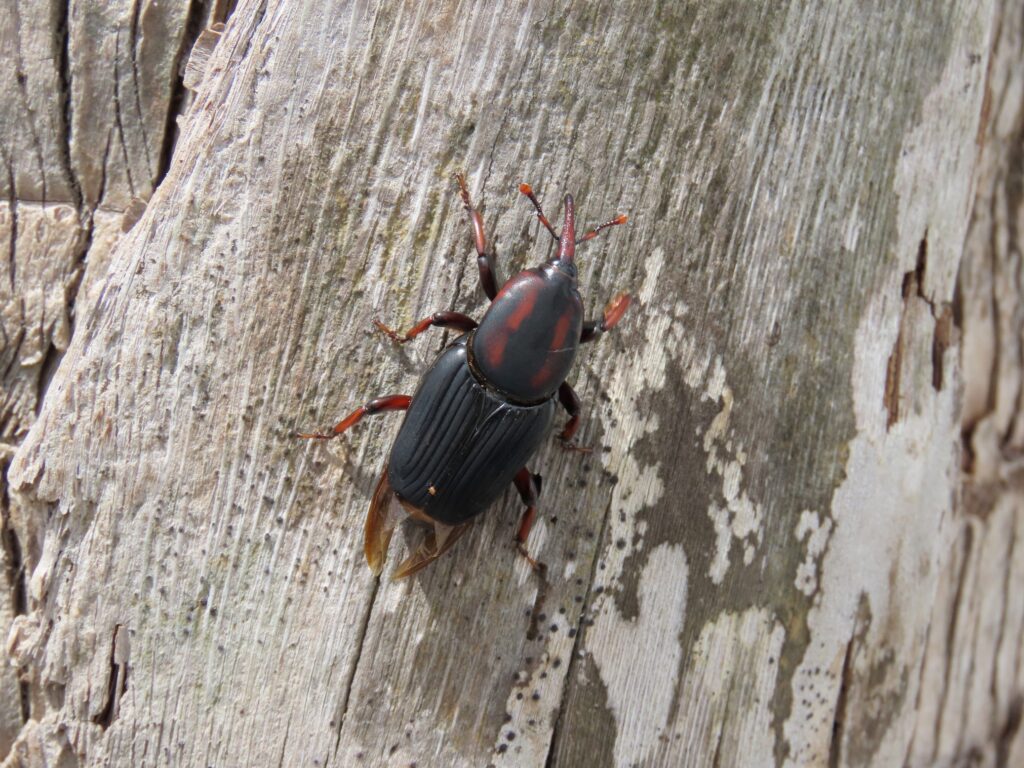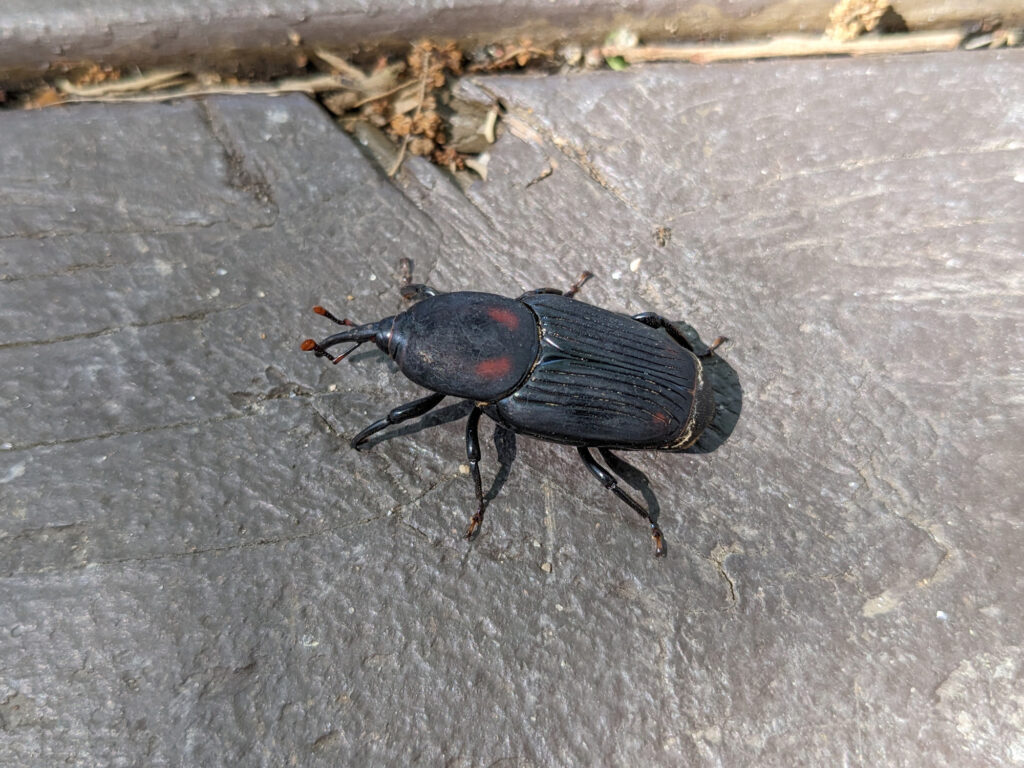




This week for Flora and Fauna Friday, we have a beetle like none other, the Palmetto Weevil (Rhynchophorus cruentatus).
The Palmetto Weevil is a hard one to misidentify. Their inch-long, pill-shaped body is colored a base coat of asphalt-black and accented with variable blotches of cinnabar-red. Palmettos Weevils are our largest Weevil species in North America. Like most Weevils (family Curculionidae) Palmetto Weevils possess an elongated rostrum, or snout, with their antennae emerging from the side of it. At the end of this rostrum is their mouth. Males have a bumpy rostrum and females a smooth one. You might now be wondering, “Why the long face?” Well, it allows Weevils to bore down into vegetation more efficiently than other beetles. For example, this allows them to feed on the inside of a nut by just punching one little hole, rather than having to fit their whole head inside. More importantly, it allows female Weevils to turn around and easily lay their eggs deep in a fruit, nut, or the tissue of a plant, rather than in a shallow cut at the surface like most beetles must. This often circumvents some of the plant’s defenses and gives their offspring a head start.
The Palmetto Weevil is found throughout Florida with a range spanning up the East Coast to South Carolina. As their name implies, they host on palmettos. So their range is ultimately limited by the abundance of host palms. Their primary native host is the Cabbage Palmetto but they will use Saw Palmetto as well. Yet, they will also make use of many of the exotic and ornamental palms when available. Female Palmetto Weevils lay their eggs at the base of live palm fronds. Once hatched, their larvae burrow into the trunk of the Palmetto and feed around the bud at the crown of the palm, growing as they go. Once full grown, they build a cocoon to pupate. All told, it takes about three months for a Palmetto Weevil to go from egg to adult beetle. The adults can live for weeks or months after. The peak time to see Palmetto Weevils is late spring, in April or May, but they continue to fly well into summer.
Palmetto Weevils are not a threat to our palmettos in a natural setting, as a whole. However, they can be destructive of individual trees when conditions are right. Palmetto Weevils, like many beetles, have an incredibly sensitive sense of smell tuned to the specific chemicals emitted by their host plant when it’s in a certain condition. For Palmetto Weevils, they can smell a stressed out or dying palmetto. Male Palmetto Weevils often survey through stands of palmettos to detect a promising palm. If they like the scent, they perch and begin releasing pheromones. Other Palmetto Weevils detect these pheromones and follow them in to join the party. The Weevils will turn this into a colony tree. As their larvae feed, they stress the tree further and draw in even more Weevils. This creates a snowball effect, which is not good for the unlucky palmetto. A Palmetto Weevil infestation can weaken or even girdle a palmetto trunk and subsequently cause its trunk to snap below the crown, killing the tree. Despite the coordinated siege-like character of this “colony tree” behavior, it is better as a whole for the Weevils and the palmettos. The colony tree is sacrificed, concentrating the Weevils there. Yet, the other healthy palmettos are spared. This keeps the two species’ populations stable and healthy, avoiding large population swings and crashes. Thus the Palmetto Weevil plays a small but nuanced role in our Sea Island ecology.